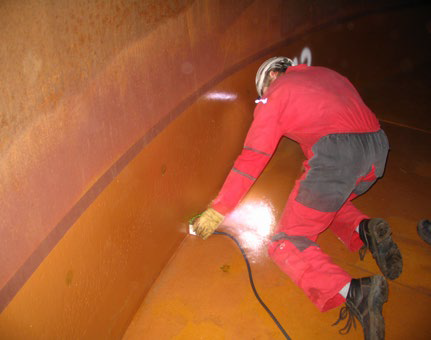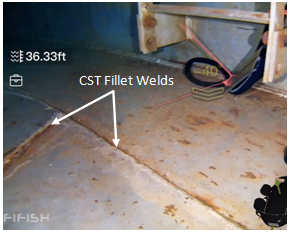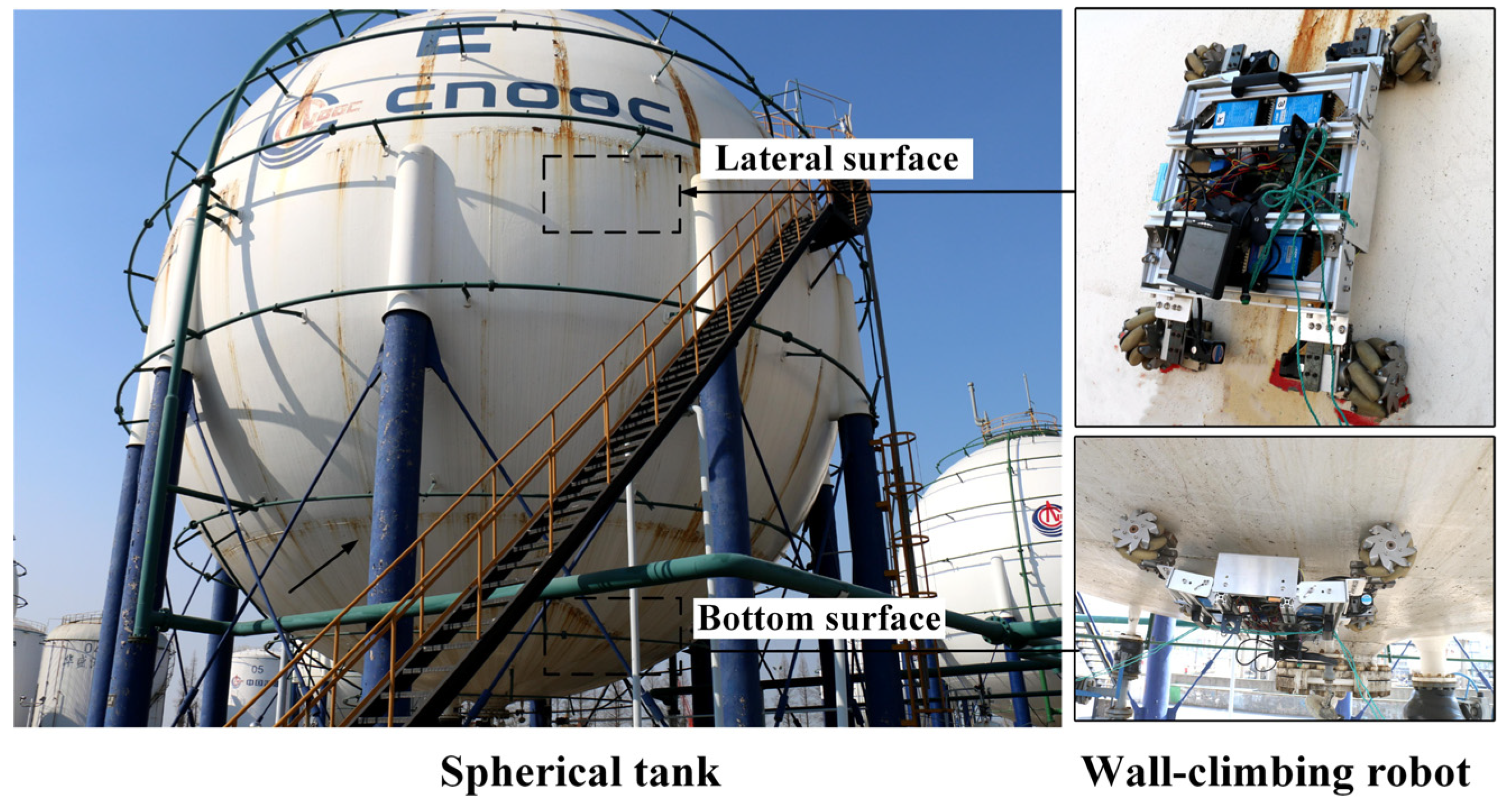Advanced Techniques in Modern Tank Welding Inspection
Wiki Article
Comprehensive Overview to Effective Storage Tank Welding Inspection Techniques and Finest Practices for Quality Control
In the realm of tank welding, extensive inspection techniques are extremely important for protecting structural integrity and making certain conformity with market laws. This overview provides a structured approach to numerous assessment approaches, consisting of visual analyses and non-destructive screening, which play a crucial duty in identifying imperfections before they intensify into serious concerns. Furthermore, the relevance of careful documents and the execution of continuous renovation techniques can not be overemphasized. As we explore these essential parts, it comes to be clear that a proactive inspection strategy is not just advantageous, however essential for operational success in atmospheres managing unsafe materials.Significance of Tank Welding Examination

Container welding examination acts as a preventative measure, identifying prospective issues such as cracks, porosity, or improper joint penetration before they rise into major issues. Routine inspections not only adhere to market laws and standards however likewise improve the long life of the containers, decreasing the requirement for costly repair services or substitutes.

Visual Evaluation Methods
Employing organized aesthetic evaluation methods is crucial for examining the quality and integrity of welded joints in storage tanks. This approach functions as the initial line of defense in determining potential problems such as splits, undercuts, and insufficient penetration. The assessor should approach the task with a keen eye, utilizing suitable devices like multiplying glasses, flashlights, and mirrors to enhance presence.Throughout the assessment process, the assessor needs to examine the weld profile, ensuring it abides by defined criteria and guidelines (Tank Welding Inspection). This includes taking a look at the bead width, height, and combination with the base product. Inspectors need to also pay attention to the surrounding areas for signs of thermal distortion or contamination that might affect the weld's performance
Documentation of findings is necessary; assessors must tape-record any anomalies, categorizing them by severity for further analysis. This organized technique not just aids in immediate problem recognition however additionally adds to lasting quality control by guaranteeing conformity with sector criteria. Normal training and calibration of aesthetic evaluation techniques better enhance the reliability of analyses, ultimately causing more secure and much more durable storage tank structures.
Non-Destructive Checking Methods
Non-destructive screening (NDT) techniques are often employed in container welding evaluations to assess the integrity of bonded joints without compromising their structural integrity. These strategies are important for recognizing problems such as splits, voids, and incorporations that can lead to disastrous failings if left undetected.Common NDT approaches consist of ultrasonic screening (UT), which utilizes high-frequency acoustic waves to discover inner imperfections; radiographic testing (RT), using X-rays or gamma rays to picture weld frameworks; and magnetic bit screening (MT), which exposes surface and near-surface interruptions in ferromagnetic products (Tank Welding Inspection). Liquid penetrant testing (PT) is also commonly made use of, efficient in discovering surface-breaking flaws by applying visit this website a fluorescent or shade contrast dye
Each NDT method has its certain applications and advantages, making it important for examiners to choose the appropriate method based upon the material and the sort of weld being evaluated. The combination of these NDT methods into the inspection process boosts the overall quality control structure, ensuring that bonded storage tanks fulfill security and efficiency requirements. Ultimately, NDT plays a crucial duty in preserving the stability and long life of storage tank frameworks in various commercial applications.

Paperwork and Reporting
Guaranteeing detailed documents and reporting during container welding inspections is important for maintaining conformity with market standards and promoting effective communication amongst stakeholders. Appropriate documents functions as a thorough record of evaluation tasks, findings, and any corrective actions taken throughout the welding procedure. This info is important not only for top quality guarantee yet additionally for audits and regulatory testimonials.
A well-structured assessment record must consist of details such as the date of assessment, names of examiners, welding procedures used, materials used, and any discrepancies from developed standards. Furthermore, photos and diagrams can improve the clearness of the report, offering visual context to the findings. It is additionally important to document any kind of non-conformities in addition to their resolution, ensuring that all stakeholders are educated of prospective risks and the actions taken to mitigate them.
Furthermore, maintaining a centralized data source for all examination records permits very easy access and evaluation, cultivating a society of openness and accountability. By prioritizing meticulous documents and coverage, companies can not just support quality assurance but also reinforce their track record within the sector, eventually causing boosted security and functional effectiveness.
Continual Enhancement Practices
Continual improvement methods are necessary for enhancing the top quality and effectiveness of container welding inspections. Applying a methodical approach to examine and refine examination techniques cultivates a society of quality control within the organization. One efficient strategy involves regular training and upskilling of inspection employees to remain abreast of the newest welding innovations and criteria. This ensures inspectors possess the required expertise and abilities to determine issues properly.
Furthermore, using data-driven evaluation allows companies to track assessment outcomes, recognize trends, and pinpoint areas for improvement. Employing Recommended Reading tools such as origin evaluation can assist in recognizing the underlying problems causing flaws, making it possible for targeted interventions. Additionally, obtaining responses from examination teams and stakeholders produces a joint environment that encourages cutting-edge remedies.
Including sophisticated technologies, such as automatic examination systems and real-time surveillance, can substantially enhance the accuracy and speed of inspections. Normal audits of the evaluation procedures likewise add to a culture of accountability and constant improvement. Eventually, these continual enhancement practices not only raise the quality of container welding evaluations yet likewise contribute to overall functional quality and client complete satisfaction.
Conclusion
To conclude, efficient container welding examination is crucial for making sure the architectural honesty and safety of storage systems, especially those managing dangerous products. Utilizing a mix of visual examination strategies and non-destructive screening approaches assists in the very early recognition of problems, therefore keeping conformity with sector requirements. pop over here Additionally, durable paperwork and a dedication to constant improvement boost top quality guarantee methods. Ultimately, these procedures add dramatically to operational excellence and the prevention of potential security hazards.Report this wiki page